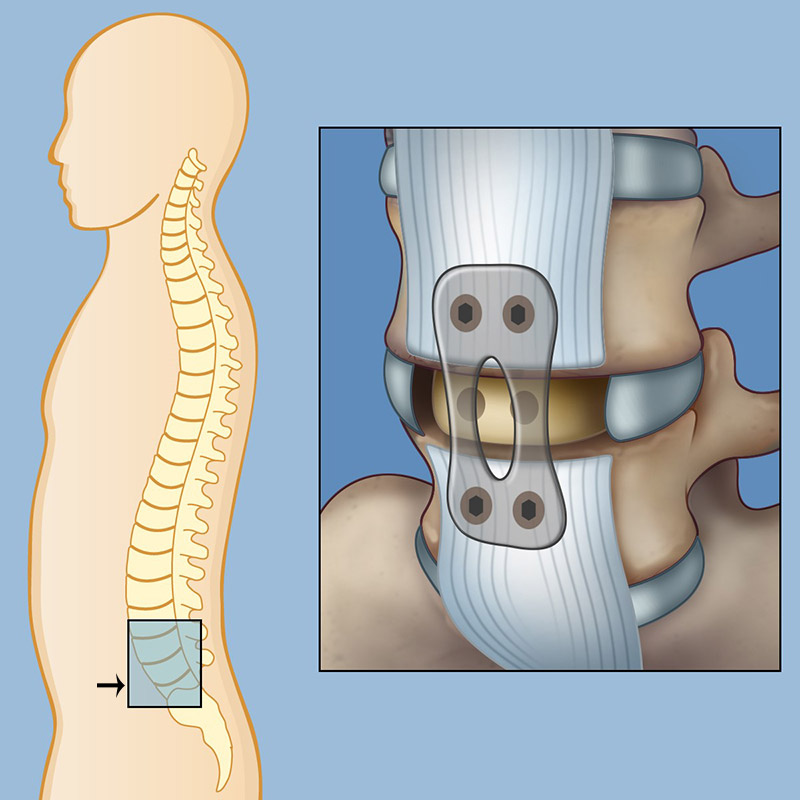FRACTURED SPINAL HARDWARE
Delving Into the Complexities of Fractured Spinal Hardware
Fractured spinal hardware is a challenging condition that demands a thorough understanding due to its intricate nature. This article delves into various aspects of examining its causes, symptoms, treatment options, prognosis, and the recovery journey.
Causes of Chordoma
- Mechanical Stress: Fractured spinal hardware often results from excessive mechanical stress on implanted devices, leading to structural failure.
- Material Degradation: Over time, the materials used in spinal hardware may degrade, increasing the risk of fractures.
- Trauma: Accidents or injuries can exert significant force on the spine, causing fractures in the implanted hardware.
- Infection: Infections in the vicinity of the hardware can weaken it and contribute to fractures.
- Age-Related Factors: Age-related changes in bone density and strength can also make individuals more susceptible to hardware fractures.
-
Symptoms of Fractured Spinal Hardware
There are a variety of symptoms that are associated:
-
Localized Pain: Persistent, localized pain near the site of the fractured hardware is a common symptom.
-
Limited Mobility: Hardware fractures can restrict spinal mobility and cause discomfort during movement.
-
Neurological Symptoms: In severe cases, fractures may compress nearby nerves, leading to neurological symptoms like weakness, numbness, or tingling.
-
Hardware Displacement: Visible changes in the position of spinal hardware may indicate a fracture.
Treatments
- Surgical Revision: Surgical intervention is often necessary to repair or replace the fractured hardware, requiring a skilled surgical team.
- Pain Management: Adequate pain management is crucial, involving medications, physical therapy, and lifestyle adjustments.
- Physical Therapy: Physical therapy plays a crucial role in rehabilitation, helping patients regain mobility and strength.
Prognosis and Challenges
- Outcome Variability: The prognosis for fractured spinal hardware can vary widely based on factors such as the extent of damage and the patient’s overall health.
- Functional Impairment: Fractured hardware can significantly impact a patient’s daily life and mobility, necessitating comprehensive rehabilitation.
- Risk of Recurrence: Vigilant monitoring for hardware recurrence is essential to address potential setbacks promptly.
- Emotional Impact: Coping with fractured spinal hardware can be emotionally challenging, underscoring the importance of emotional support systems.
Prognosis and Challenges
- Outcome Variability: The prognosis for fractured spinal hardware can vary widely based on factors such as the extent of damage and the patient’s overall health.
- Functional Impairment: Fractured hardware can significantly impact a patient’s daily life and mobility, necessitating comprehensive rehabilitation.
- Risk of Recurrence: Vigilant monitoring for hardware recurrence is essential to address potential setbacks promptly.
- Emotional Impact: Coping with fractured spinal hardware can be emotionally challenging, underscoring the importance of emotional support systems.
Recovery
- Postoperative Care: Patients often require specialized postoperative care, focusing on wound management, pain control, and complications prevention.
- Rehabilitation: Physical therapy aids in the recovery process, facilitating mobility, strength, and functional independence. Occupational therapy helps individuals adapt to physical limitations.
- Follow-Up: Regular follow-up appointments are vital, encompassing healing progress monitoring, recurrence surveillance, and complications management.
- Emotional Support: Emotional support from family, friends, counseling, or support groups is instrumental in navigating the emotional aspects of recovery.
The Key to Thriving
- Pain Management: Effective pain management is crucial for a successful recovery, involving medication management, lifestyle adjustments, and alternative pain management techniques.
Proactive Monitoring: Staying proactive about one’s health by adhering to prescribed treatments, managing coexisting medical conditions, and promptly reporting new or worsening symptoms to healthcare providers is pivotal.
- Hopeful Outlook: Maintaining hope and resilience are fundamental to the recovery journey. Staying informed about the latest research and treatment options and connecting with others who have faced similar challenges can provide encouragement and a sense of community.
In conclusion, addressing fractured spinal hardware requires a comprehensive approach that includes medical treatments, rehabilitation, emotional support, and proactive self-management. Despite the challenges, many individuals find ways to adapt, enhance their quality of life, and maintain a positive outlook on their journey to recovery.
Believe you have symptoms of Fractured Spinal Hardware?



